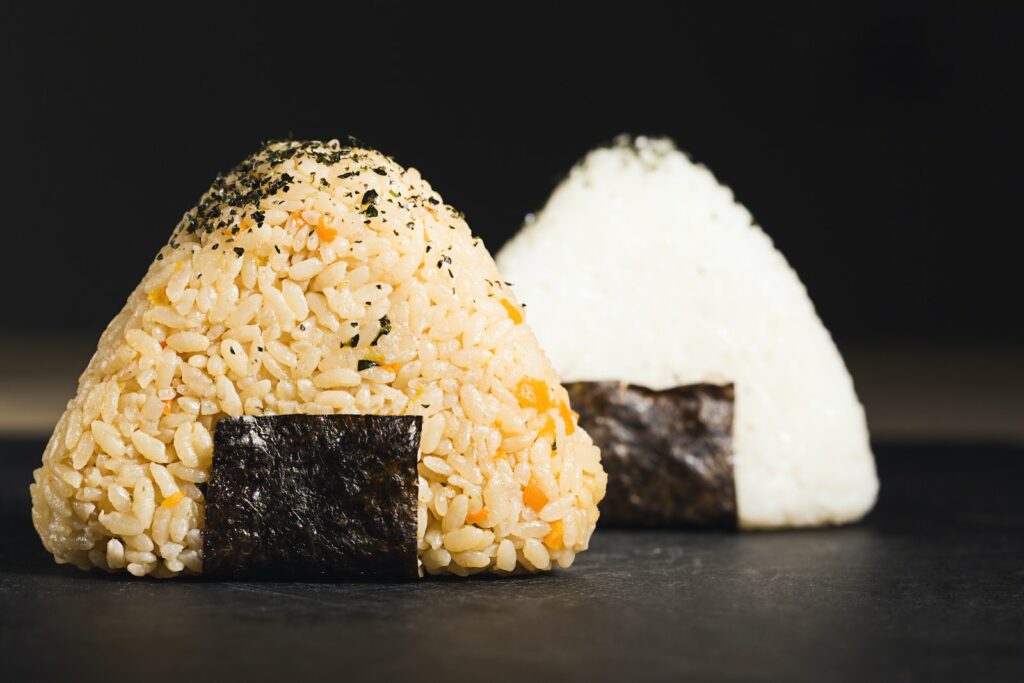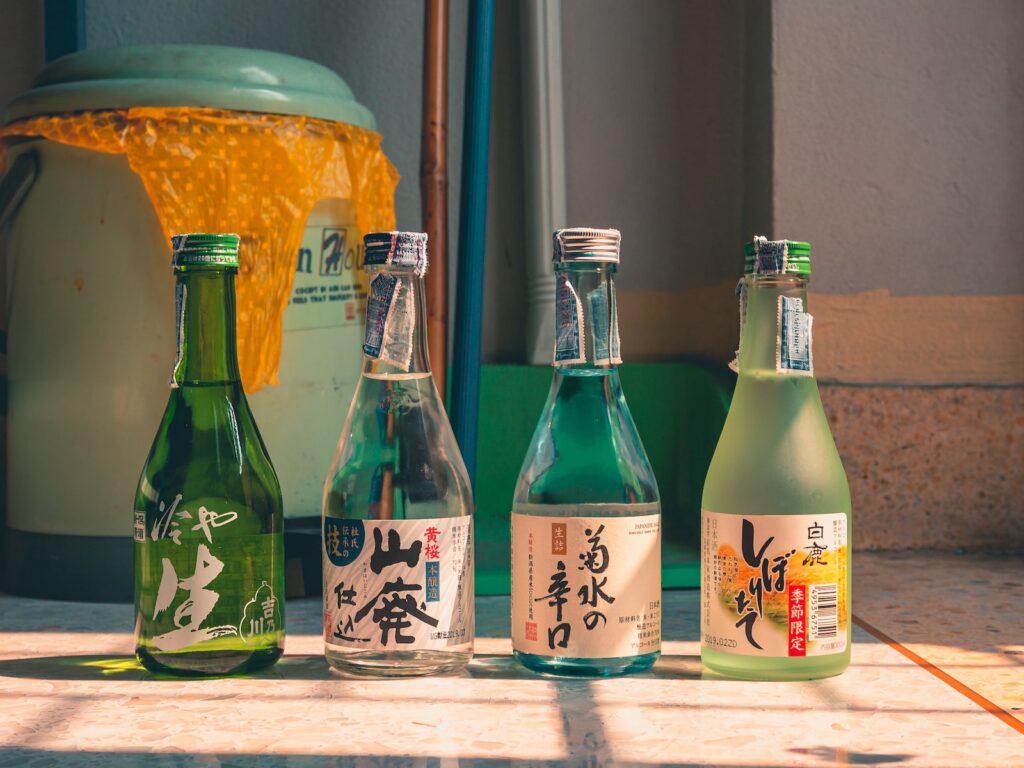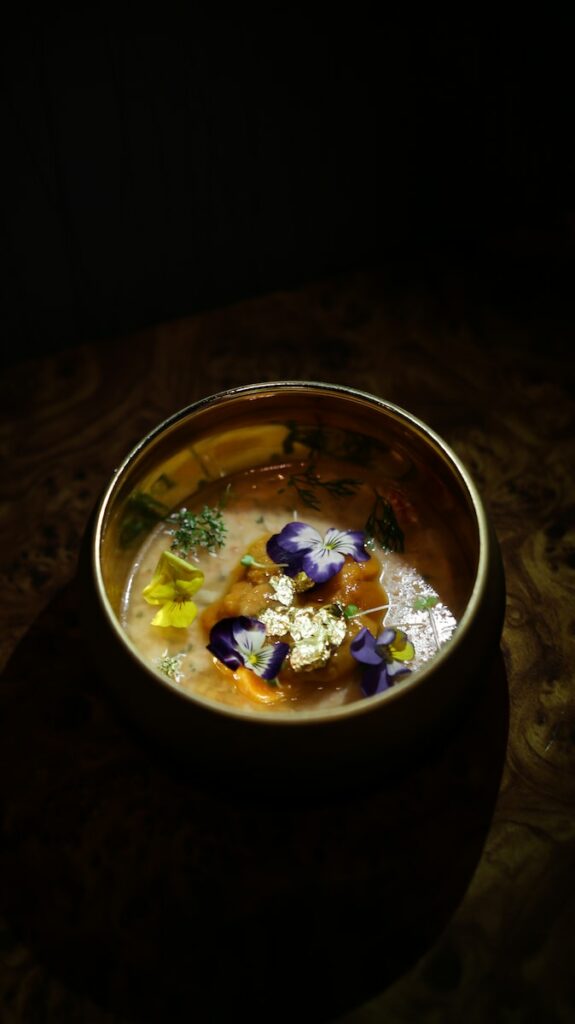You can find a variety of Japanese food items in many American grocery stores these days. However, if you want a truly authentic Japanese grocery store experience, you should visit one of the many Japanese grocery stores located throughout the United States.
In a Japanese grocery store, you’ll find all of the traditional Japanese food staples, such as rice, noodles, tofu, and seaweed. You’ll also find a wide variety of Japanese snacks, including Pocky sticks, green tea Kit-Kats, and Hello Kitty marshmallows. In addition, most Japanese grocery stores sell a variety of Japanese cooking implements, such as rice cookers and sushi mats.

If you’re looking to try something new, or if you’re just curious about Japanese cuisine, be sure to check out your local Japanese grocery store. You may be surprised at what you find!
Table of Contents
Sushi rice

Sushi rice is a type of rice that is used to make sushi. It is a short grain rice and is also known as sushi-meshi, sushi-rice, and sushi-gohan. Sushi rice is usually white or off-white in color and has a slightly sticky texture.
The rice is washed and then cooked in a rice cooker with a 1:1 ratio of water to rice. Once the rice is cooked, it is cooled and then vinegar, salt, and sugar are added to it. The rice is then mixed together and formed into small balls.
Sushi rice is used to make a variety of sushi such as nigiri, maki, and chirashi. It can also be used to make onigiri, which is a type of Japanese rice ball.
Nigiri is sushi that is made by pressing sushi-rice into a small oval shape and then topping it with fish or other seafood.
Maki is sushi that is made by rolling sushi-rice and other ingredients in nori (seaweed paper).
Chirashi is sushi that is made by mixing sushi-rice with other ingredients such as vegetables, fish, and eggs.
Onigiri is a type of Japanese rice ball that is made by pressing sushi-rice into a small triangular or oval shape.
Nori
Nori is a type of edible seaweed that is most commonly used in sushi. It is also known as laver in some parts of the world. Nori is usually dark green or purple in color and has a slightly salty, ocean-like flavor.
Nori is a nutrient-rich food that is high in vitamins and minerals, including iodine, iron, and calcium. It is also a good source of protein and fiber.
Nori is harvested from the ocean and then dried and pressed into sheets. It is used in a variety of Japanese dishes, such as sushi, onigiri, and miso soup.
Nori is a healthy and delicious addition to any meal. Try it in your next sushi roll or add it to a soup or salad for a boost of flavor and nutrition.
Sake

Sake is a Japanese alcoholic beverage made from fermented rice. It is also known as nihonshu or seishu. The brewing process of sake is similar to that of beer, in which the starch is converted into sugar and then into alcohol. However, unlike beer, sake is brewed using only rice, water, koji mold, and yeast.
Sake has been around for over 2,000 years and is an important part of Japanese culture. It is often served at special occasions, such as weddings and funerals, and is considered a symbol of good luck.
There are many different types of sake, which vary in taste, aroma, and alcohol content. The most common type of sake is futsu-shu, which makes up around 70% of all sake consumed in Japan. Other types include daiginjo and ginjo, which are made from higher-quality rice and have a higher alcohol content.
Sake can be enjoyed in many different ways, such as warmed, chilled, or at room temperature. It is often served with food, such as sushi, sashimi, and tempura.
If you are looking to try something new, or want to learn more about Japanese culture, then sake is definitely worth a try!
Soy sauce
Soy sauce is a common ingredient in Japanese cuisine, and has been used in the country for centuries. The sauce is made from soybeans, wheat, and salt, and is used to add flavor to dishes.
Soy sauce is used in a variety of Japanese dishes, such as sushi, tempura, and yakitori. It is also used as a dipping sauce for meats and vegetables. Soy sauce is a key ingredient in many Japanese sauces and marinades.
Soy sauce is a dark brown liquid with a salty, umami flavor. It is made by fermenting soybeans and wheat with salt and water. The fermentation process can take up to two years.
Soy sauce is a versatile ingredient that can be used in many different dishes. It is a common ingredient in Asian cuisine, and can be used to add flavor to meats, vegetables, and sushi.
Mirin
Mirin is a Japanese cooking wine that is made from rice. It has a sweet taste and is used to add flavor to dishes. Mirin is a type of rice wine, but it is sweeter than other types of rice wine. It is also lower in alcohol content.
Mirin is made by fermenting rice. The rice is first steamed, then cooled and mixed with a mold called koji. The koji breaks down the starch in the rice and turns it into sugar. The mixture is then fermented for several months.
Mirin has a sweet, syrupy taste. It is used to add flavor to dishes, but should not be used as a drinking alcohol.
You can use mirin to make sushi rice, in marinades for meats, or in soup and stew recipes.
Dashi
In Japanese cuisine, dashi is a class of soup and cooking stock used as the base for miso soup, clear soup, noodle soup, and many simmered dishes. Dashi forms the base for many kinds of tsukemono and is used in making sauce, such as soy sauce and teriyaki sauce.
Dashi is made by heating water and kombu seaweed to release the umami flavor compounds from the kombu, and then adding dried bonito flakes to extract the flavor from the fish. The bonito flakes are then strained out, and the dashi is ready to use.
Dashi can be made with just water and kombu, or with water, kombu, and dried bonito flakes. The kombu and bonito flakes can be reused to make a second batch of dashi.
Dashi can be made ahead of time and stored in the fridge for up to a week, or in the freezer for up to a month.
When making miso soup, the dashi is first simmered with the miso paste to dissolve it. Then, the soup ingredients are added and cooked until tender.
Dashi can also be used to make clear soup, noodle soup, and many simmered dishes.
Japanese curry powder
Japanese curry powder is a type of curry powder used in Japanese cuisine. It is made from a variety of spices, including turmeric, cumin, coriander, and chili pepper. Japanese curry powder is used to flavor both cooked dishes and as a condiment.
Curry powder was introduced to Japan in the late 19th century by the British. At first, it was used only by the military and foreign residents, but it gradually became popular among the Japanese. By the early 20th century, curry powder was being produced in Japan and sold in stores.
Japanese curry powder is typically milder than Indian curry powder. The flavor is also different, as Japanese curry powder often includes fruits and vegetables in the blend, which gives it a sweeter taste.
When using Japanese curry powder, it is important to remember that a little goes a long way. It is typically used sparingly, as too much can make a dish overly spicy. Japanese curry powder can be added to both cooked and raw dishes. It is often used in stews, soups, and sauces. It can also be used to flavor rice, vegetables, and meats.
If you are looking for a way to add some flavor to your dishes, Japanese curry powder is a great option. It is versatile and can be used in a variety of dishes. Give it a try the next time you are in the kitchen!
Miso

Miso is a type of fermented soybean paste that is used in many Japanese dishes. It is made by fermenting soybeans with salt and koji, a type of fungi. Miso has a strong, salty flavor and is used as a condiment or seasoning. It is also a good source of protein and vitamins.
Miso is most commonly used in soup, but it can also be used in other dishes such as rice and noodles. It is also used as a marinade for meats and vegetables. Miso soup is a popular dish in Japan and is often served with tofu, seaweed, and green onions.
Miso is a healthy food that is high in protein and vitamins. It is also low in calories and fat. Miso is a good choice for those who are looking for a healthy alternative to other soy products.
Rice vinegar
Rice vinegar is an essential ingredient in Japanese cuisine. It is made from rice that has been fermented and has a slightly sweet, sour and acidic taste.
Rice vinegar is used in a variety of dishes such as sushi, sashimi, salads, pickles and sauces. It is also a common ingredient in marinades and dressings.
Rice vinegar adds a delicate flavor to dishes and can be used to balance out other flavors. It is also a healthy option as it is low in calories and fat.
Sesame oil
Sesame oil is an edible vegetable oil derived from sesame seeds. It is high in polyunsaturated fat and has a nutty flavor.
Sesame oil is a popular ingredient in Asian cuisine, used for stir-frying, marinades, and as a finishing oil. It is also used in cosmetics and skincare products.
Sesame oil is high in antioxidants and has anti-inflammatory and anti-cancer properties. It is also a good source of vitamin E and has been shown to improve heart health.
Sesame oil is a healthy alternative to other vegetable oils and can be used in many different ways. Try it in your next stir-fry or marinade for a delicious and healthy meal.
Wasabi
Wasabi is a plant that is native to Japan. It is in the same family as horseradish, and its root is used as a spice. Wasabi has a sharp, pungent taste that is similar to horseradish, but it is hotter.
Wasabi is used as a condiment with sushi and sashimi. It is also used in sauces, dressings, and marinades. Wasabi can be bought in paste, powder, or paste form.
When buying wasabi, look for a product that is a bright green color. Avoid products that are dull green or brown. Wasabi paste should be smooth, not grainy.
Wasabi paste can be made by grating the wasabi root on a grater or by using a food processor. Wasabi powder can be made into a paste by adding water.
If you cannot find wasabi powder or paste, you can use horseradish in its place.